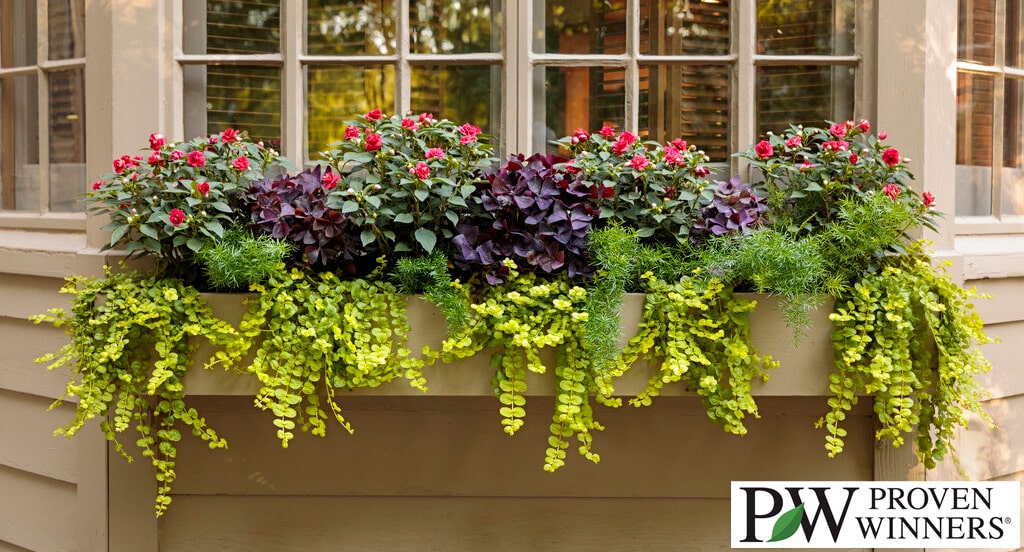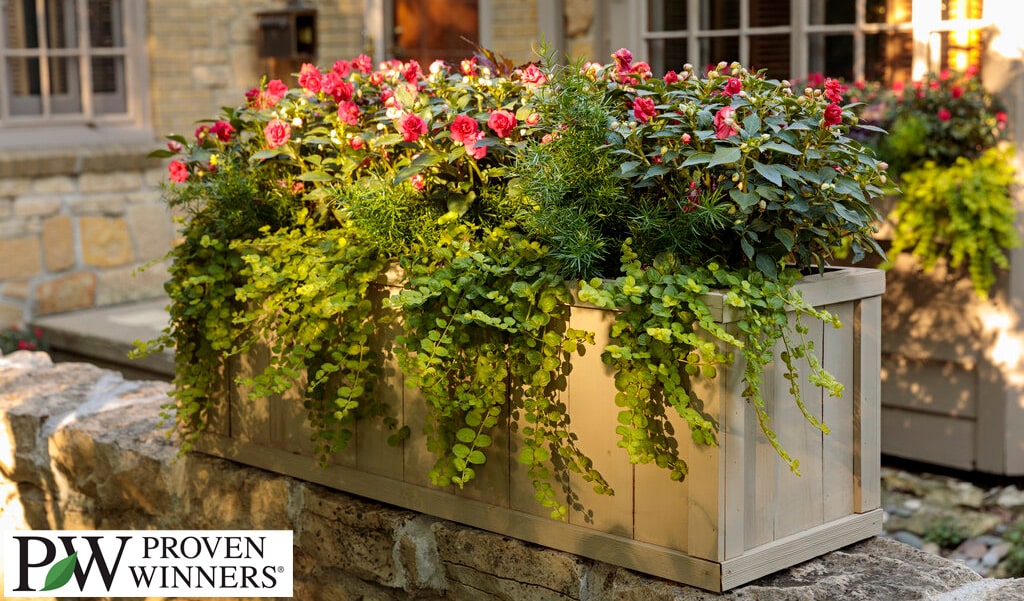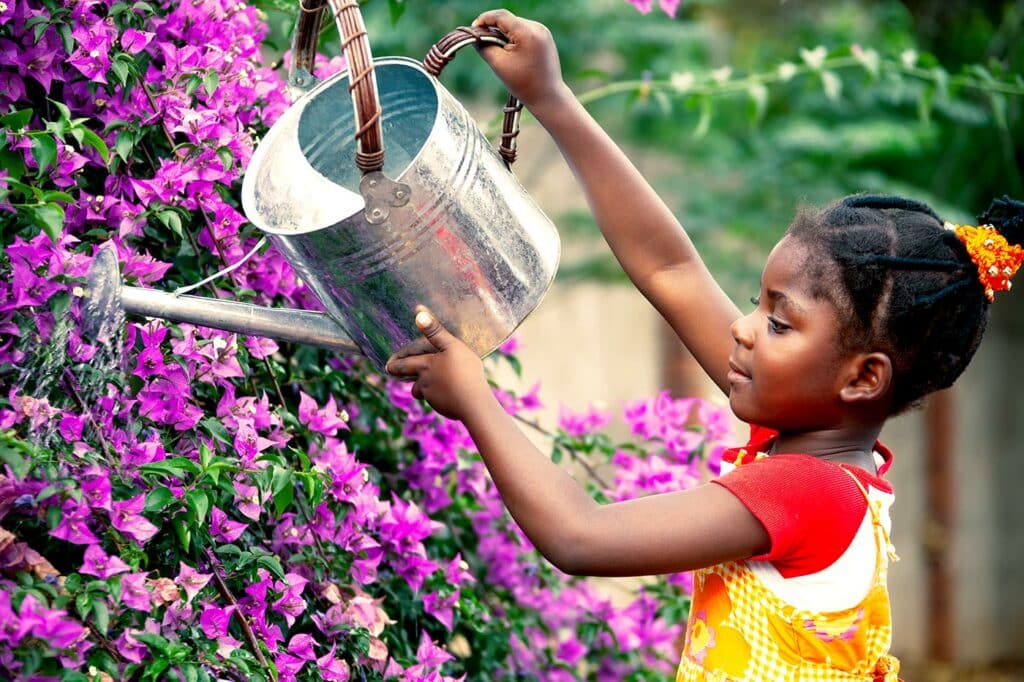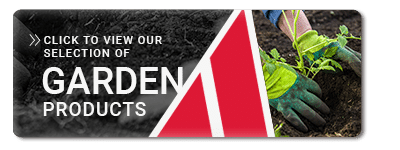The Hassle-Free Way to Plan Your Container Garden
Container gardening is appealing for many reasons, whether you are restricted by a small amount of yard space, want only a small group of plants to care for on your patio or balcony, or want to add some color to your front porch. It’s an idea compromise for many different people.
The obvious appealing thing about container gardening is that it gives you more control. Using different pots and planters allows you to grow different plants with different soil and sunlight needs. Additionally, you can move containers to different spots in your yard, or if necessary, out of hazardous weather. Container plants can be moved more easily if they outgrow their pot and you can mitigate pest and disease problems more easily. Typically less weeds pop up in garden containers, saving you time since there is usually less weeding needed.
Plants in containers can enhance your curb appeal from the street, or because they can be moved closer to an entertainment area, they can and add to the ambience of your patio or deck space. Containers also make herbs and vegetables more accessible while you prepare dinner.
There are some added benefits for the plants as well. Plants grown in containers tend to have less diseases compared to plants in your garden. They also tend to have fewer insects.
While there are many benefits to planting in containers, there are few things to keep in mind when choosing your plants for containers. Plants in pots do require more watering and fertilizing. Choosing the proper size of container is important: if it is too small may not have enough space for root growth during the entire growing season, which can limit the plants’ productivity.
A few tips for planning container gardens around your home this season:
Location! Location! Location!
Before you go to the Garden Center, make time to do a planning session to determine where your containers will be located. Pay attention to whether or not the spot you choose is in the sun all day. Put plants that love sun with other sun-loving plants and shade plants with shade plants, and make sure you understand which ones will have similar watering needs (pairing succulents with annuals, for instance).
Selecting Your Plants
If you are creating a planter with flowers, the best way to help decide how to create a unique assortment is selecting plants that are “Thrillers, Fillers and Spillers” to create a focal point. Thrillers are usually a single plant that grows tall, creating height and placed towards the center or middle. Think if it as the centerpiece of that particular container.
Fillers are foliage or flowers that complement the Thriller, but don’t overwhelm the box or pot. They are positioned so you don’t see bare soil and are more rounded or mounded in shape, so these are planted in between the Thriller and the Spiller.
Then the Spillers are typically trailing annuals that hang or cascade over the edge and side of the container as the plant grows through the season. These are planted last in your container.
Next, decide on your color scheme to help guide the combination of plants you want to use. Determine the main color you want to use and then choose colors that complement the main color. Using reds, oranges and yellows can create a vibrant container. Blues, purples and whites can create a more peaceful look. You can use various shades of one color, like pinks, for a simpler combination. Mixing in bright colors that complement each other, such as yellow and purples together, greens and reds together, and oranges and blues, creates a pop of color which creates interest and can make the pot look larger.
You have a lot of freedom, but you can always get advice from our Garden Center associates or check out Proven Winners for container recipe ideas or Pinterest for inspiration.
If you are planting herbs, choose herbs that grow best together, like rosemary, sage and thyme. They have the same growing conditions, preferring more dry soil. Cilantro, parsley and basil grow well together because they like more damp soil. Some herbs should not be planted with other herbs, like mint and horseradish, because they spread very aggressively and can overtake your other plants.
Selecting the right pot
Larger pots and planters can be better for most plants since larger containers can hold more soil, which will help keep your plant cool and moist in the summer heat. Smaller or shallow containers need watering more often because they tend to dry out more quickly. Clay pots dry out more quickly than plastic or glazed pottery because water evaporates through the sides of a clay pot. Lighter colored pots will keep your plants’ roots cooler in the summer since they absorb less heat.
Pots need drainage holes, otherwise roots sitting in water can rot, which will kill your plant. A pot that holds a larger volume of soil can help the plants develop a bigger root system, which make a healthy plant. If you are trying to grow plants that have height, choose a deeper pot.
Soil and Fertilizer Needs
Use good quality potting soil, ideally with fertilizer mixed in. Potting mixes such as Miracle Gro Flower and Plant Potting Mix, Miracle-Gro Moisture Control Flower Potting Mix and Whitney Farms Organic All Purpose Potting soils have the proper mix of fertilizer to help meet your plants’ needs when you first pot your plant. Make sure to read the plant’s tags for proper fertilizing instructions throughout the season, but for most plants, fertilizing every two weeks is ideal to provide adequate nutrition for your plants to thrive. There are many application options for fertilizers that make it very easy to apply, from Miracle-Gro’s All Purpose Power Plant Food to simple Miracle-Gro Shake ‘n Feed Granules.
Consider the Number of Plants
For a pot to start looking full in 2 to 3 weeks, 3 to 4 plants can fit into a 10 or 12 inch planter and 5 to 8 plants can fit into a 16 to 20 inch planter, depending on the size of your plant.
Most plant tags offer recommended spacing, which is typically information for in-ground spacing, but that can help guide you on how to plant in your containers. Plants that have a smaller spacing recommendation tend to be smaller and don’t grow as quickly, while ones with larger spacing recommendations are more vigorous and will grow larger. If there is not adequate space between plants, overcrowding can restrict airflow, which is helps dry out foliage, which helps prevent disease. Additionally, fewer plants allow for better root growth.
Whether you are new to gardening and want to test a few plants, or you are an experienced gardener looking to have easier access to herbs on your back deck or want to add some color to your front porch, container gardening can be very rewarding and help you save some time.




